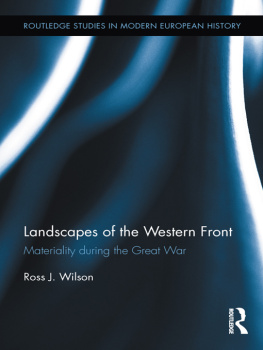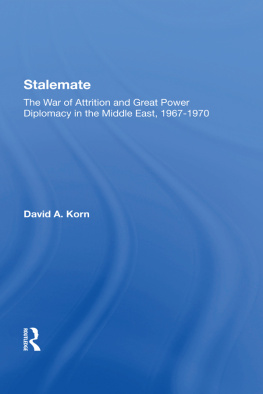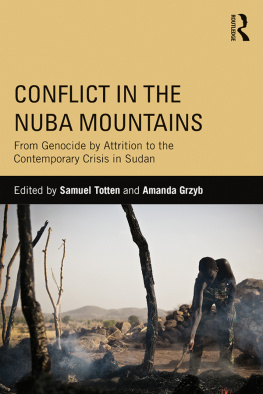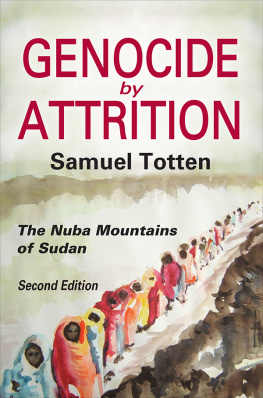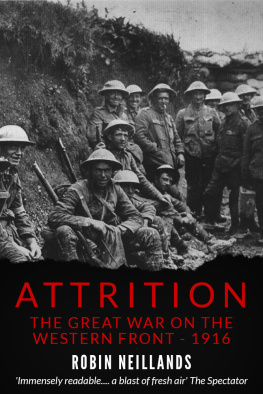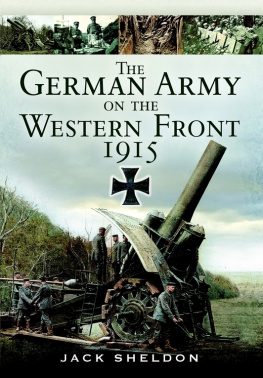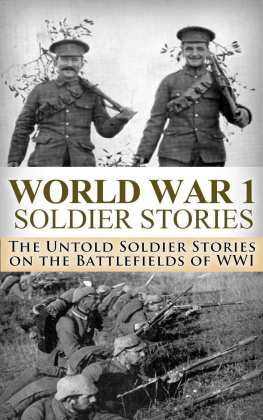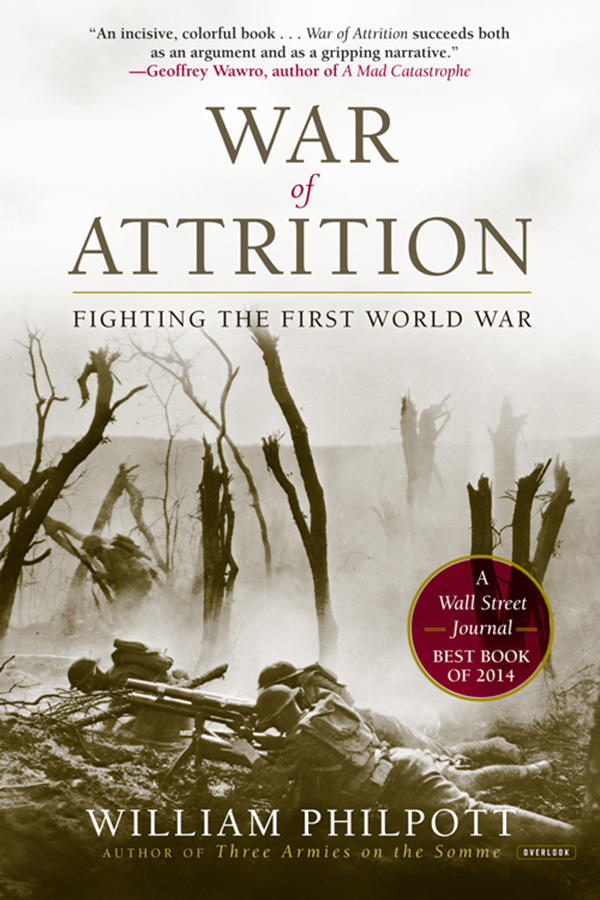This edition first published in paperback in the United States in 2015 by
The Overlook Press, Peter Mayer Publishers, Inc.
141 Wooster Street
New York, NY 10012
www.overlookpress.com
For bulk and special sales, please contact ,
or write us at the above address.
Copyright 2014 by William Philpott
All rights reserved. No part of this publication may be reproduced or transmitted in any form or by any means, electronic or mechanical, including photocopy, recording, or any information storage and retrieval system now known or to be invented, without permission in writing from the publisher, except by a reviewer who wishes to quote brief passages in connection with a review written for inclusion in a magazine, newspaper, or broadcast.
ISBN: 978-1-4683-1231-7
Three Armies on the Somme:
The First Battle of the Twentieth Century
This book is dedicated to the memory of my mother
Ruby May Philpott
19282009
| AAT | Service historique de la dfense, Archives de larme de terre |
| BEF | British Expeditionary Force |
| CIGS | Chief of the Imperial General Staff |
| CA | Corps darme (French Army Corps) |
| DI | Division dinfanterie (French infantry division) |
| GHQ | British General Headquarters |
| GQG | Grand quartier gnral (French general headquarters) |
| NCO | Noncommissioned officer |
| OHL | Oberste Heeresleitung (German supreme army general headquarters) |
| SPD | German Social Democratic Party |
| SWC | Allied Supreme War Council |
| TNA | The National Archives, Kew |
European armies were able to field millions of men in the First World War. To command, control and administer them a rigid structure was needed, and each army was organised along similar lines. Subordinate to the commander in chief there were army groups, commanded by senior generals. Each army group comprised two or three armies, each commanded by a general (the British army did not have army groups, the British armies in France and Flanders formed after January 1915 effectively comprising a single army group). An army was composed of a number of army corps, typically three or four per army, each commanded by lieutenant-generals, with attached air, heavy artillery and later tank units. An army corps was made up of divisions commanded by major-generals. Early war army corps usually had two divisions, but from 1915 three or four divisions was the norm, with supporting units being attached as required. Divisions were all-arms units (with infantry, field artillery, cavalry, engineers and supporting services) organised to fight as independent units, and were the basic tactical building blocks of armies. Each division was divided into brigades, each commanded by a brigadier-general. Continental divisions typically had two brigades of infantry, each comprised of two regiments of three infantry battalions, plus an artillery brigade or regiment of field gun batteries. From 1915 continental armies reduced infantry battalions to nine per division, eliminating the brigade level of command in favour of the regiment commanded by a colonel. For much of the war British divisions were organised into three brigades, each with four battalions, with three supporting field artillery brigades. In 1918 British infantry brigades were reduced to a three-battalion strength. Infantry battalions commanded by lieutenant-colonels were around 1,000 men strong in 1914, and had four infantry companies commanded by majors or captains. All armies decreased battalion size as the war went on, with a machine-gun company often replacing one of the infantry companies.
I n late September 1918 Captain Alban Bacon of the Hampshire Regiment visited an artillery battery that was to support his battalions next attack. I was greeted with great good will by the Gunner Officers, he recollected:
They had also heard that every infantry solider in France was going over the top on the following morning, and prayed that it might not rain too hard, for, if so, the guns would be mud-logged, and unable to move to support the infantry. Armageddon was evidently set. A last great push was about to be called for to free France from Hohenzollern shackles. In any case, I was given an excellent lunch, to an orchestra of their guns.
The roar and whoosh of gunfire was nothing new. The First World War had recently entered its fifth year, and soldiers had grown used to bombardments. Still, the cacophony of thousands of guns launching hundreds of thousands of shells through the air never failed to surprise and shock, especially since it presaged another attack and close, bloody combat. The British, American, Australian and French soldiers who sheltered in their front trenches in Picardy were naturally apprehensive. Although many were veterans by now, accustomed to the sounds and actions of battle and trained to advance confidently across no mans land into the enemys trenches, an attack still meant danger, wounds, and death. They knew that many of them would not survive it, although by autumn 1918 many had become inured and fatalistic. If their time had come, they appreciated that their personal sacrifice would help to seal the fate of the German army, which was on its last legs after four years of sustained attrition. At the same time, among the troops spirits were high for this must be the final goodbye to trench warfare at last. As always the coming attack would be a test of flesh and blood, but it would also be a vindication of fire and steel.
Between 1914 and 1918 warfare had changed its nature. Attrition, the cumulative exhaustion of the enemys fighting capacity, had done its work. When the attacking companies left their trenches, they followed a raging wall of artillery fire across no mans land that protected them until they were within the enemys defences. The enemy soldiers they encountered there were still brave but outnumbered and exhausted. The raw American troops attacking on the northern end of British Fourth Armys front, across the Bellicourt tunnel that bridged the St Quentin Canal at this point, were engaged by machine-gun and artillery fire and the Australian battalions coming up in support found themselves sucked into the fight. There the attack seemed to be checked. But to the south British troops of the 46th Division supported by probably the heaviest weight of artillery fire ever to accompany the attack of a single British division had crossed the St Quentin Canal under the cover of early morning fog and pushed on into the centre of the German defences. It required only one week of intensive fighting for the Hindenburg Line to fall into Allied hands. A defensive position judged impregnable in 1916 was no match for the techniques and military technology that the Allies could now deploy against it. Behind the Hindenburg Line there were only partly constructed defences for the disintegrating German army to fall back on as the empires leaders sought an armistice against a background of domestic political upheaval. Fighting was still fierce until Armistice Day, 11 November 1918, but the Allied war machine was now unstoppable and the German army more or less spent.
Since 1914 Germany had turned most of the world against her with her actions on land and at sea. At home her people had endured hunger and shortages while her civilian politicians had been largely silenced as her military leadership had staked the nation in an all-or-nothing struggle for supremacy in Europe. Her allies were near to collapse too: Bulgaria had sued for an armistice a few days earlier and Turkey and Austria-Hungary would soon do the same. The Great War had taken a great deal out of Germanys opponents too, but they had proved resilient, resolute, and well resourced advantages which Germany could never match. While Germany had torn herself apart in waging an unwinnable war, her adversaries had come together, united in their shared sense of purpose, organised into a collaborative war effort and sustained through a popular consensus that the war was just. The only way to win a war that pitted coalitions of industrialised empires against each other was through a process of mass mobilisation and sustained attrition.


